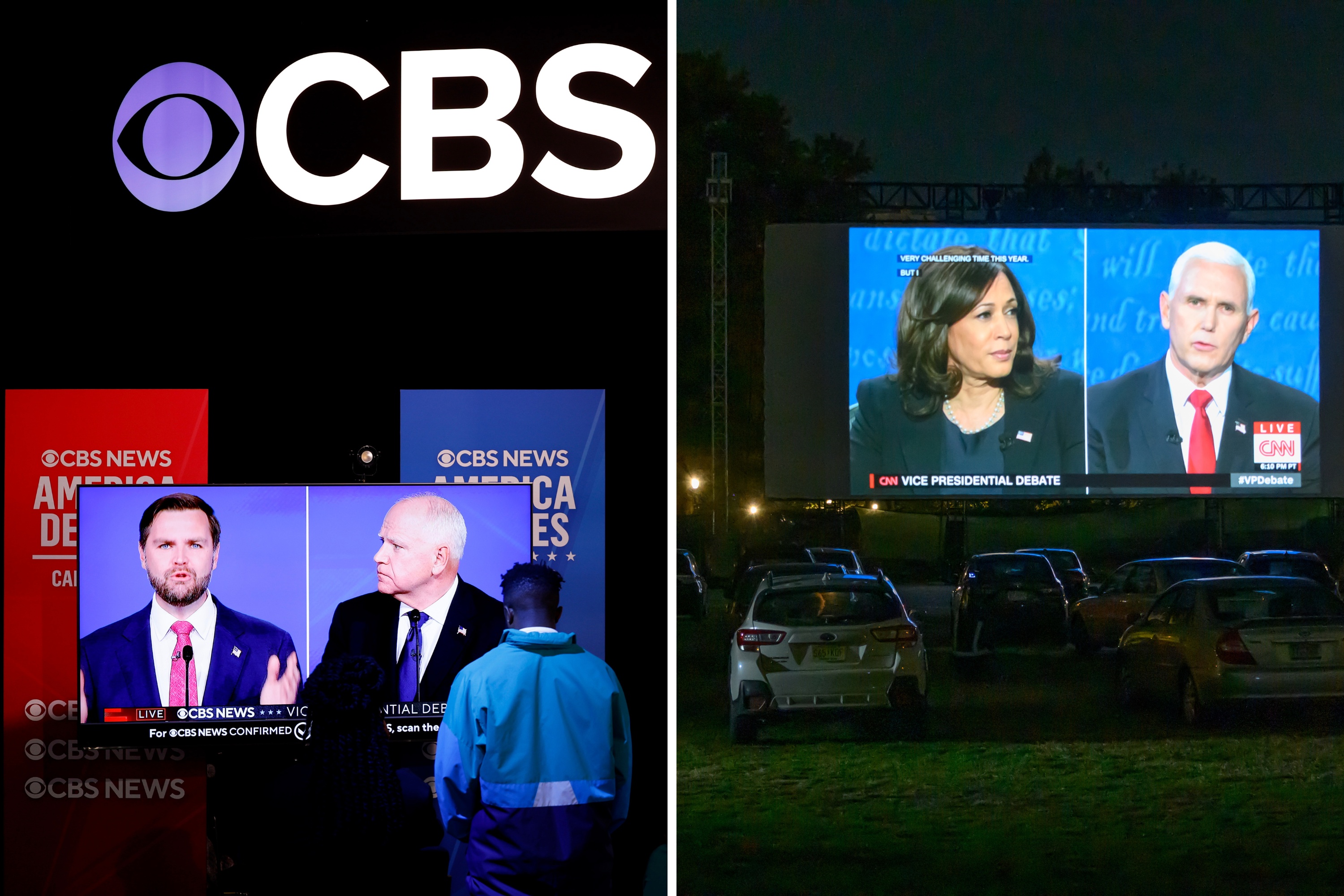The recent debate between Minnesota Governor Tim Walz and Ohio U.S. Senator JD Vance attracted significantly fewer viewers compared to the 2020 vice presidential showdown. According to Nielsen, around 43.1 million viewers tuned in, a drop of nearly 25% from the 57.9 million who watched the Harris-Pence debate.
Despite being described as relatively civil, this debate fell short of the popularity of its predecessor, which was the second-highest viewed VP debate recorded. The all-time high remains the 2008 matchup between then-Senator Joe Biden and Alaska Governor Sarah Palin, with a staggering 69.9 million viewers.

Anna Moneymaker; Noam Galai/WireImage
Tune-in numbers for this year’s debate mirrored the 2004 face-off between Dick Cheney and John Edwards, which garnered 43.6 million viewers. However, the recent presidential debates attracted much larger audiences: Harris vs. Trump on September 10 pulled in 67.1 million, while the June Trump-Biden debate had 51.2 million viewers.
This debate was likely the last among major party candidates, as Trump has indicated that he won’t participate in upcoming debates against Harris. While polls suggest a majority felt Harris won against Trump, the outcome of the Walz-Vance debate was less definitive.
A CNN/SSRS quick poll found 51% believed Vance emerged victorious, while 49% sided with Walz. Both candidates saw an increase in favorability post-debate. Similarly, CBS News/YouGov registered Vance as the winner, 42% to 41%, with 17% seeing it as a tie.
In a Politico snap poll, viewers were split evenly, each candidate winning 50% of votes. However, Walz did receive stronger support from independent voters, winning 58% to Vance’s 42%, and he experienced a notable rise in favorability according to CNN data.
“Winning a debate is tricky these days,” commented analyst Devine. “With the electorate so divided, supporters often believe their candidate came out on top. This debate is likely a draw among partisans, with independents potentially favoring either side but not enough to create a clear victory.”
